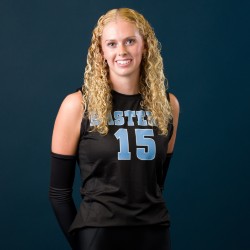Retention proposals hope to keep students longer
This archived article was written by: Chris Barney
Roughly 2,100 students are enrolled at USU Eastern, with a good portion of the aforementioned being locals from Carbon and Emery Counties. Under the supervision of Peter Iyere as vice-chancellor over student success and retention, Jan Thornton continues her efforts to keep students at Eastern for more than a semester or two.
Enrollment goals for public universities are often centered on recruiting. Just as important is the retention of the students that were successfully recruited the previous year. Thornton’s job focuses on such. “We’re always trying to exceed the previous year’s benchmark.” Incomplete data originally skewed the retention numbers from fall semester to this spring, but more research shows that Eastern follows the national community-college trend to lose roughly 20 percent of students from fall to spring.
Although many attribute such to the LDS missionary age change, there are hidden variables that, through investigation, are appearing to have a greater impact on the number of students choosing to “come back.” Thornton says. “There weren’t any correlating factors that seemed to be standing out other than the students who haven’t returned either tested into remedial math or had scores that had expired which would require them to either test again or start in remedial math although I do not believe this speaks to math as the problem.
“At this time, I am working to see the number of students who are persisting and where they started with their math to see if there is a difference between the two groups. I have a comment from a book that I think reflects our institution so well, Vincent Tinto’s book Leaving College and it says “institutions and students would be better served if a concern for the education of students, their social and intellectual growth were the guiding principle of institutional action. When that goal is achieved, enhanced student retention will naturally follow.
“I believe that is what our institution and our staff and faculty have really excelled at and where I think the mentoring initiative will only enhance that effort. “[Student’s success in] remedial math courses (1010 and below) have a strong correlation with how many students stay from year to year. I don’t have data at this point as to whether or not they are enrolling in the courses and succeeding only data on the testing. ”
A struggle that the academic advising office often faces is encouraging students to follow through and complete the required math courses. Struggling in math can dishearten any student, and as Thornton points out, can even lead the student to dropping out of his/her chosen program. There are efforts being made to address remedial math at the state and policy level and USU has piloted the Math 0921 program and is working on another pilot for students on a statistics track which will pilot in Logan this summer.
Movements are being made to increase retention at Eastern, primarily by adding a mentoring program to the school. Such a program would go beyond academic advising, in allowing the student to keep closer ties with their professors and desired degrees.
One might not think of retention as the catalyst for enrollment success, but its place next to recruiting can’t be ignored for the school to grow. Compared to other Utah public schools, Eastern stacks up well in terms freshman recruiting. In fall 2013, the University saw a substantial increase in first-year students compared to the previous fall.
Iyere says, “We have invested $100,000 to involve faculty and staff in recruitment. “We are seeing positive results from an increase in efforts. Other universities are experiencing decrease while we are increasing. We want to make sure faculty members are the ones mentoring students.”
It appears clear that retention will be the key to growth at Eastern. “I want to restructure developmental courses. We are doing a lot to improve student success. Students are customers, and we want to improve customer service. We want to make sure they get quality education for the money they pay,” Iyere says.




